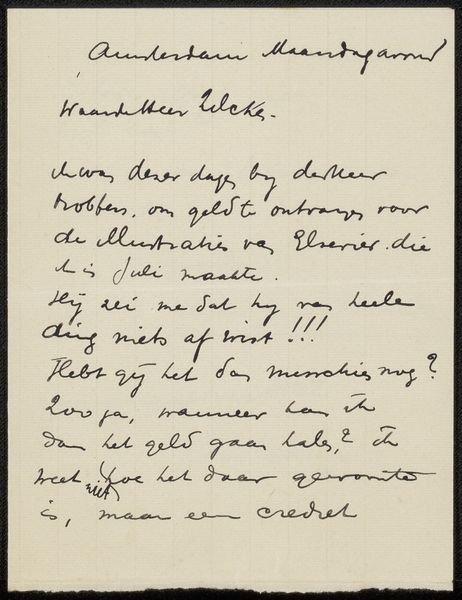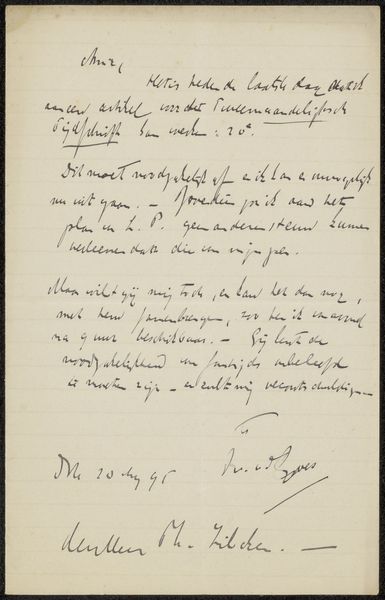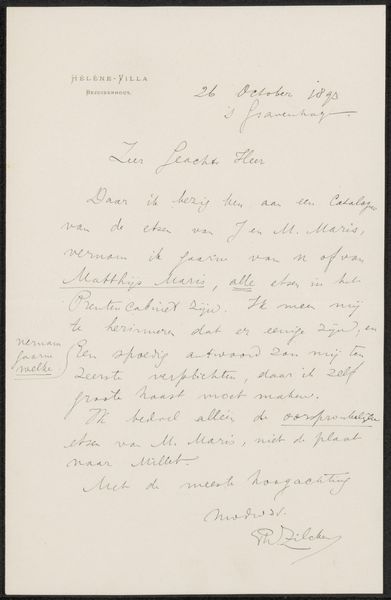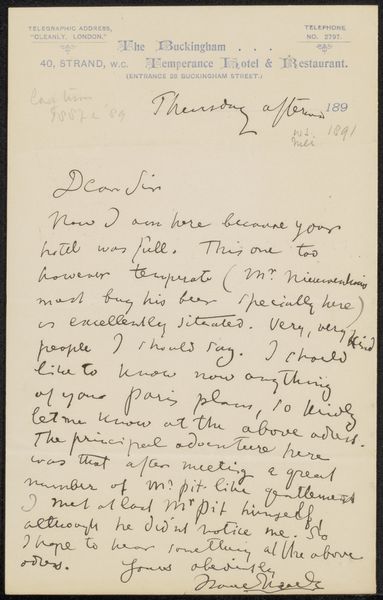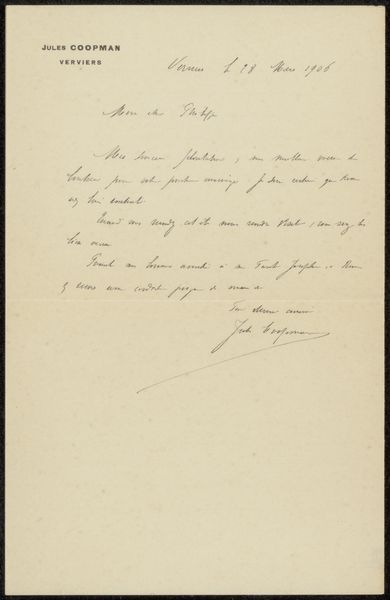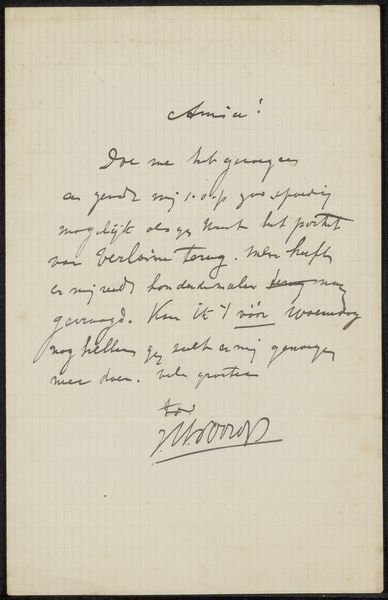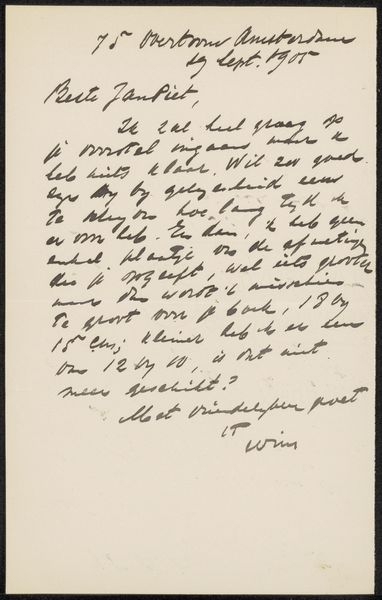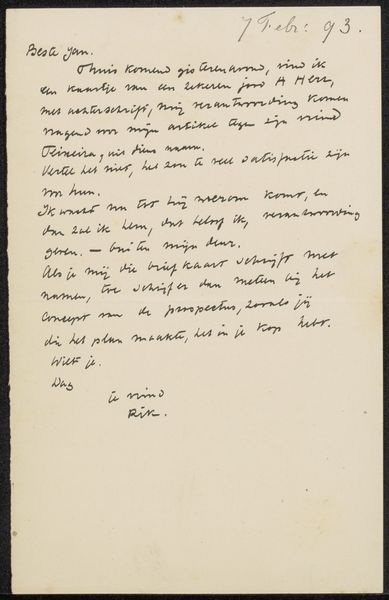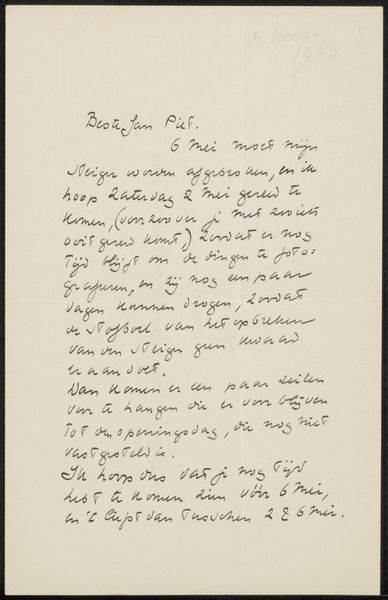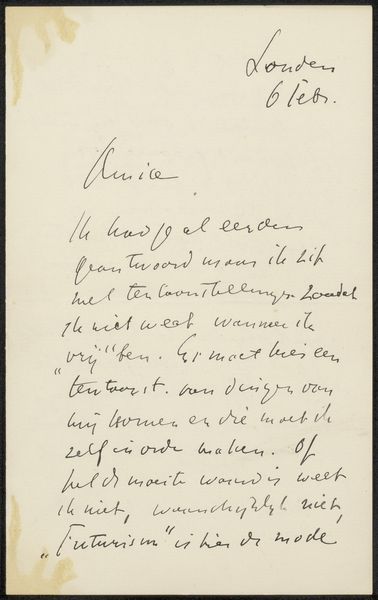
drawing, paper, ink
#
portrait
#
drawing
#
hand-lettering
#
dutch-golden-age
#
hand drawn type
#
hand lettering
#
paper
#
personal sketchbook
#
ink
#
pen-ink sketch
#
sketchbook drawing
Copyright: Rijks Museum: Open Domain
Curator: Here we have "Brief aan Jan Veth," attributed to Isaac Israels, created sometime between 1875 and 1925. It's currently housed here at the Rijksmuseum. What's your immediate reaction to this piece? Editor: Well, initially, it evokes a sense of intimacy and immediacy. It's just a letter, really – ink on paper. I find myself drawn to the raw, unedited process of thought and the physical act of writing itself. It makes me think about the effort involved. Curator: Indeed. Let's delve into that a bit. Consider the composition – the placement of the text on the page, the deliberate hand-lettering. You could interpret the somewhat scattered arrangement and varied line weights of each word as reflective of spontaneous thought processes, right? It disrupts a clear flow. Editor: Precisely! And that's what speaks to its materiality. The paper, the ink, even the pen itself, they are tools employed within the artist’s labor of composing this missive. It humanizes the artwork as an imperfect, and fundamentally human form of communicating with someone he knew and likely loved. Curator: That imperfection is essential. The drawing as a document invites questions. What are the stylistic qualities we can draw upon given his status as a painter who worked across a range of portraiture, impressionism, and landscapes? The use of paper and ink in and of itself gives us very little to hold onto. Editor: Agreed. But I believe looking into that artist’s milieu helps clarify our interpretation, or rather contextualizes its making and utility. In the late 19th-century art world, a handwritten letter held an intrinsic value quite apart from its literary qualities. Curator: A pertinent point. It’s the object itself that then gains value. Not the content of the letter, but as an artefact—a moment in time rendered permanent. Its impact is perhaps strongest in its simplicity and quietness. Editor: Perhaps it demonstrates that true art exists in direct creation: a physical and mental act to touch the lives of others through a common experience we all share as both givers and receivers of the hand-written word. Curator: Ultimately, its compelling effect lies in the immediacy of a passing moment—that intimacy you spoke of earlier. A fragment preserved across time.
Comments
No comments
Be the first to comment and join the conversation on the ultimate creative platform.

